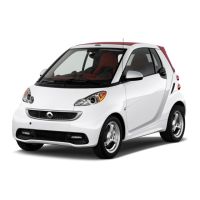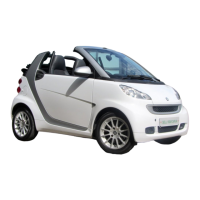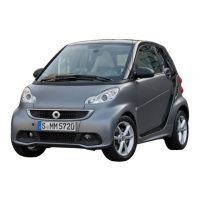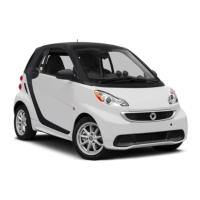G
WARNING
If the required tire pressure is not reached
after driving for a short period, the tire is
too badly damaged. The tire sealant cannot
repair the tire in this instance. Damaged
tires and a tire pressure that is too low can
significantly impair the vehicle's braking
and driving characteristics. There is a
risk of accident.
Do not continue driving. Contact a quali-
fied specialist workshop.
X
Correct the tire pressure if it is still at
least 130 kPa (1.3 bar/19 psi). For values, see
the tire and loading information table on
the driver's side B-pillar.
X
To increase the tire pressure: switch on the
tire inflation compressor.
X
To reduce the tire pressure: depress pres-
sure release button : next to pressure
gauge ;.
X
If the tire pressure is correct, unscrew the
filler hose from the valve of the sealed
tire.
X
Screw the valve cap onto the valve of the
sealed tire.
X
Drive to the nearest qualified specialist
workshop and have the tire changed there.
X
Have the tire sealant bottle and the filler
hose replaced as soon as possible at a
qualified specialist workshop.
X
Have the tire sealant bottle replaced every
four years at a qualified specialist work-
shop.
Battery (vehicle)
Important safety notes
Special tools and expert knowledge are
required when working on the battery, e.g.
removal and installing. You should therefore
have all work involving the battery carried
out at a qualified specialist workshop.
G
WARNING
Work carried out incorrectly on the battery
can lead, for example, to a short circuit and
thus damage the vehicle electronics. This
can lead to function restrictions applying
to safety-relevant systems, e.g the lighting
system, the ABS (anti-lock braking system)
or the ESP
®
(Electronic Stability Program).
The operating safety of your vehicle may be
restricted.
You could lose control of the vehicle, for
example:
R
when braking
R
in the event of abrupt steering maneuvers
and/or when the vehicle's speed is not
adapted to the road conditions
There is a risk of an accident.
In the event of a short circuit or a similar
incident, contact a qualified specialist
workshop immediately. Do not drive any
further. You should have all work involving
the battery carried out at a qualified spe-
cialist workshop.
Further information about ABS (
Y page 47) and
esp
®
(Y page 49).
G
WARNING
Electrostatic build-up can lead to the cre-
ation of sparks, which could ignite the
highly explosive gases of a battery. There
is a risk of an explosion.
Before handling the battery, touch the
vehicle body to remove any existing elec-
trostatic build-up.
The highly flammable gas mixture forms when
charging the battery as well as when jump-
starting.
164
Battery (vehicle)
>> Breakdown assistance.

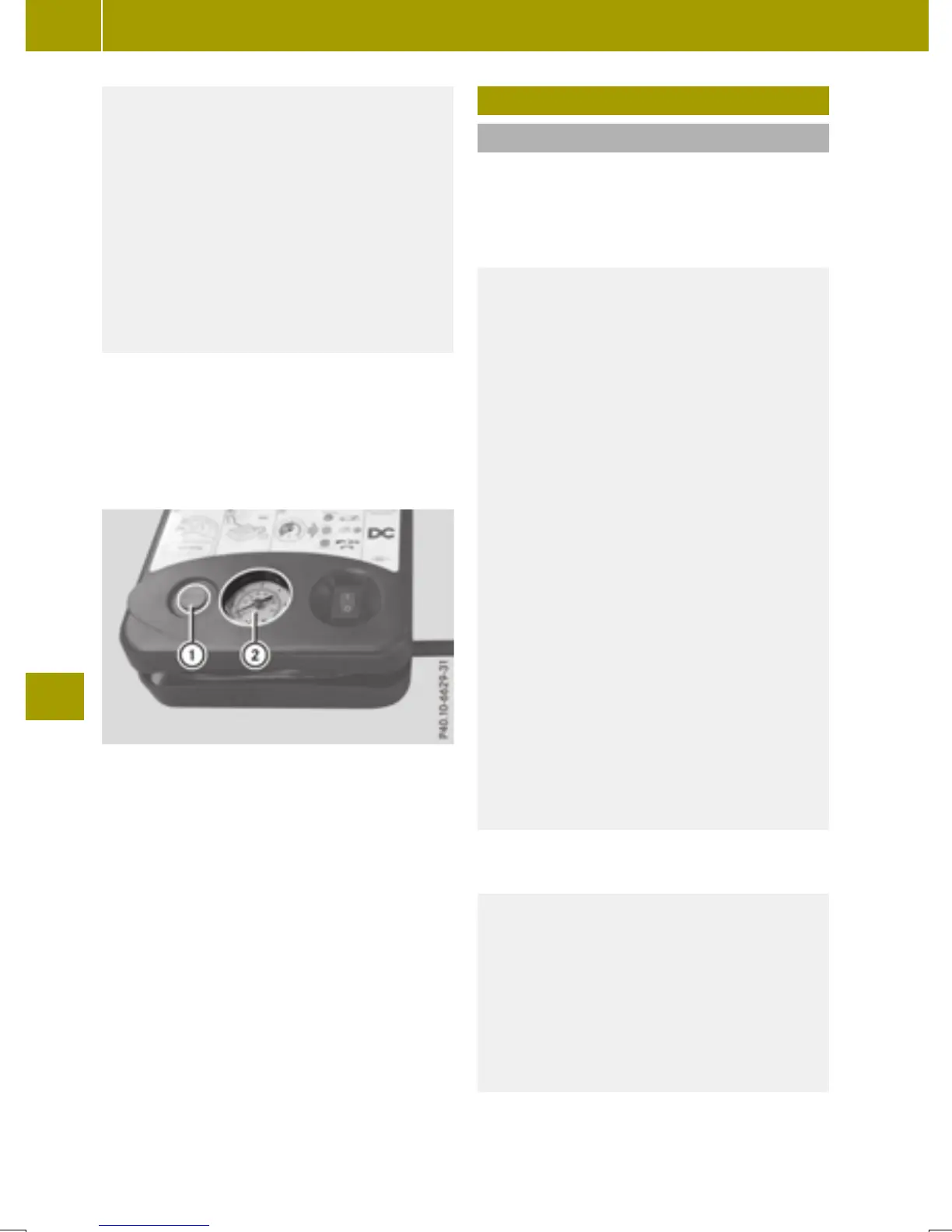